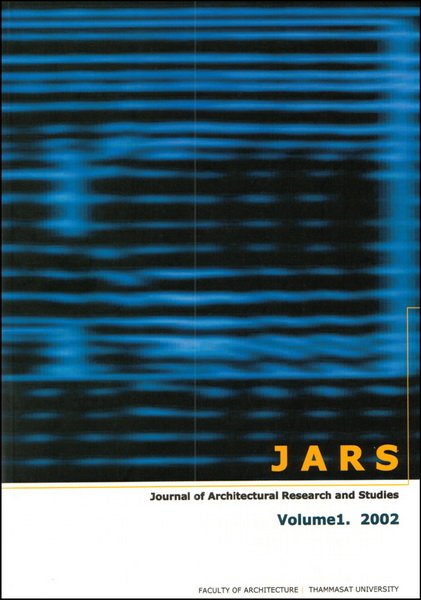A New Design Process Using an Inverse Method: A Genetic Algorithm for Daylighting Design
Main Article Content
Abstract
Today, architectural design emphasizes high-standard buildings with sophisticated daylighting systems, because harnessing daylight provides both energy savings on lighting and psycho-physical comfort in room space. Daylighting design is a hard problem since its properties—such as lighting intensity and distribution, colors and radiant energy—vary over time. Most problem-solving techniques are forward method and are typically “trial and error” process, attacking problems on the front end first. On the other hand, a problem-solving technique called the inverse method, which seems to be efficient, has been applied in this paper. The paper emphasizes the use of scientific-knowledge computational tools in the later stages of design in an effort to provide optimum choices of design. Genetic algorithm (GA) is used to search for optimal design strategies. A new design process has been created and implemented to increase design process efficiency. In addition to the architectural representation, this paper presents a structured method for defining and evaluating multiple objectives. Lightshelf and its daylighting system parameters are under investigation. Moreover, this work investigated several design problems, GA parameters and processes for improving design results. Results show that a new model using basic genetic algorithm techniques results in shorter design times and greater diversity of solutions.
Downloads
Article Details

This work is licensed under a Creative Commons Attribution-NonCommercial-NoDerivatives 4.0 International License.
All material is licensed under the terms of the Creative Commons Attribution 4.0 International (CC-BY-NC-ND 4.0) License, unless otherwise stated. As such, authors are free to share, copy, and redistribute the material in any medium or format. The authors must give appropriate credit, provide a link to the license, and indicate if changes were made. The authors may do so in any reasonable manner, but not in any way that suggests the licensor endorses you or your use. The authors may not use the material for commercial purposes. If the authors remix, transform, or build upon the material, they may not distribute the modified material, unless permission is obtained from JARS. Final, accepted versions of the paper may be posted on third party repositories, provided appropriate acknowledgement to the original source is clearly noted.
References
Schoeneman, Dorsey, Smits, Arvo, & Greenberg. (1993). Painting with light. Computer Graphics Proceedings, Annual Conference Series, 143-146.
Negroponte, N. (1970). The architecture machine. Cambridge, MA: The MIT Press.
Nazzal, A., & Chutarat, A. (2000). A new daylight glare evaluation method: A comparison of the existing glare index and the proposed method and an exploration of daylighting control strategies. Illuminating Engineering Society of North America Annual Conference Proceedings. New York.
Goldberg, D., & Horn, J. (1995). Genetic algorithm difficulty and the modality of fitness landscapes. Foundations of Genetic Algorithms 3 (243-269). California: Morgan Kaufmann Publishers, Inc.
Manikas, T. (1996). Genetic algorithms vs. Simulated annealing: A comparison of approaches for solving the circuit partitioning problem. Technical Report 96-101. Department of Electrical Engineering, The University of Pittsburgh, PA.
Holland, J. (1965). Adaptation in natural and artificial systems: An introductory analysis with applications to biology, control, and artificial intelligence. Michigan: University of Michigan Press.
Jang, J. (1997). Neuro-fuzzy and soft computing: A computational approach to learning and machine intelligence. New Jersey: Prentice Hall.
Aizlewood, M. (1993). Innovative daylighting systems: An experimental evaluation. Lighting Research and Technology, 25(1), 141–152.
Littlefair, P. (1990). Innovative daylighting: Review of systems and evaluation methods. Lighting Research and Technology, 22(1), 1–17.
Littlefair, P. (1995). Light shelves: Computer assessment of daylighting performance. Lighting Research and Technology, 27(2), 71–90.
Lam, W. (1986). Sunlighting as formgiver for architecture. New York: Van Nostrand Rienhold, Inc.
Wall, M. (1999). http://lancet.mit.edu/galib/. Cambridge, MA: Department of Mechanical Engineering, Massachusetts Institute of Technology.


